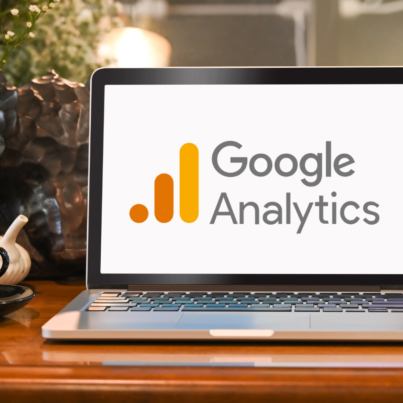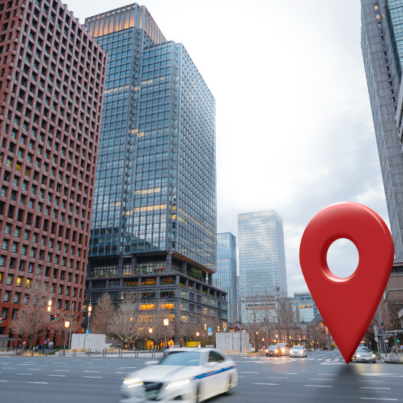In 2025, Facebook advertising remains one of the most powerful tools for businesses to drive traffic, increase brand awareness, and generate leads. Despite the increasing competition on social media platforms, Facebook Ads continue to be highly effective—when executed correctly. However, creating Facebook ads that convert requires a strategic approach, creativity, and a deep understanding of your audience.
This comprehensive guide will walk you through step-by-step strategies to create high-converting Facebook ads in 2025. We’ll cover everything from setting up your campaign to crafting compelling ad creatives and optimizing for better performance.
Why Facebook Ads Are Still Effective in 2025
Despite the rise of other platforms like TikTok and Instagram, Facebook’s extensive reach, advanced targeting options, and diverse ad formats make it one of the most effective platforms for businesses in 2025. With over 2.8 billion monthly active users, Facebook offers unmatched access to a broad, yet highly segmented audience.
What makes Facebook ads even more powerful is the ability to:
- Target specific audiences based on interests, behaviors, demographics, and location.
- Track performance and optimize in real-time.
- Utilize dynamic creatives, including videos, carousels, and slideshows, to engage your audience.
To make your Facebook ads stand out in 2025, you need to stay on top of trends, adapt to algorithm changes, and leverage Facebook’s new features. Here’s how to create ads that convert.
Step 1: Set Clear Goals for Your Facebook Ad Campaign
Before diving into ad creation, it’s crucial to define your campaign objectives. Facebook offers several campaign types designed for different business goals, including:
- Brand Awareness: Increase visibility and recognition.
- Traffic: Drive users to your website or landing page.
- Lead Generation: Collect customer information through forms.
- Sales: Directly drive conversions and purchases.
- App Promotion: Encourage users to download your app.
Actionable Tip:
Choose a campaign objective that aligns with your business goals. For example, if your primary goal is to increase sales in 2025, you might focus on the Conversions or Catalog Sales objectives, which are designed to drive purchases.
Step 2: Know Your Target Audience Inside and Out
Facebook’s sophisticated targeting options allow you to reach exactly the right audience for your ad. However, to truly drive conversions, you must understand who your audience is and what they care about.
Audience Segmentation:
- Demographic Targeting: Age, gender, income, education, job title, and more.
- Interest-Based Targeting: Facebook allows you to target users based on their interests, hobbies, and pages they follow.
- Behavioral Targeting: Target users based on their purchasing behaviors or device usage.
- Custom Audiences: Upload your customer lists to retarget past visitors or engage with previous buyers.
- Lookalike Audiences: Create new audiences similar to your existing customers to expand your reach.
Actionable Tip:
Create buyer personas based on your current customer data to fine-tune your audience targeting. This will help ensure you’re reaching users most likely to convert.
Step 3: Choose the Right Ad Format for Maximum Impact
Facebook offers a variety of ad formats to suit different types of businesses and marketing goals. Here’s a breakdown of the most popular formats to consider in 2025:
1. Image Ads
Still the most popular format, static image ads are simple but effective. Use high-quality visuals that resonate with your target audience, keeping the message clear and concise.
2. Video Ads
Video ads have a higher engagement rate than static images, especially with Facebook’s algorithm prioritizing video content in the news feed. Use videos to showcase products, tell your brand story, or provide educational content.
3. Carousel Ads
These allow you to showcase multiple products or features within a single ad, with users swiping through images or videos. Carousel ads are great for displaying a range of offerings or telling a sequential story.
4. Slideshow Ads
If you have limited video resources, slideshow ads can be a cost-effective alternative. They use a series of still images to create a motion effect, offering a similar user experience to video ads.
5. Collection Ads
Perfect for eCommerce, Collection ads allow users to browse and purchase products directly within the Facebook app, offering a seamless shopping experience.
Actionable Tip:
Choose your ad format based on your business type and campaign goal. If you’re showcasing a product range, go for carousel ads. For brand awareness, focus on video or image ads.
Step 4: Craft Engaging Ad Copy
While eye-catching visuals are important, ad copy plays a critical role in driving conversions. In 2025, your ad copy needs to resonate with your target audience and motivate them to take action.
Key Elements of Effective Facebook Ad Copy:
- Compelling Headline: This is the first thing users see, so make it clear, attention-grabbing, and relevant to the audience’s interests.
- Concise, Benefit-Oriented Text: Focus on the benefits of your product or service. How will it solve a problem or improve the user’s life?
- Strong Call-to-Action (CTA): Be direct with what you want your audience to do—whether it’s “Shop Now,” “Learn More,” “Sign Up,” or “Get Offer.”
- Emotional Appeal: Use storytelling to create an emotional connection with your audience. In 2025, personalization and authenticity in ad copy are crucial for building trust and engagement.
Actionable Tip:
Test different copy variations through A/B testing to determine what resonates best with your audience. Tweak headlines, CTAs, and body text to optimize for higher conversion rates.
Step 5: Optimize Landing Pages for Conversions
Once users click on your Facebook ad, the next step is to guide them smoothly to a landing page that matches the ad’s messaging and encourages conversion.
Landing Page Optimization Tips:
- Match ad copy with landing page content: Ensure there is consistency between your Facebook ad and landing page. A seamless experience between the two increases the likelihood of conversion.
- Clear, focused CTA: Your landing page should have one primary goal (e.g., making a purchase, signing up for a newsletter, etc.), and your CTA should reflect that.
- Mobile-Friendly Design: With the majority of Facebook users browsing on mobile devices, ensure your landing page is optimized for mobile viewing and fast loading times.
- Social Proof: Include testimonials, reviews, or trust badges to help build credibility.
Actionable Tip:
Monitor your landing page’s bounce rate and conversion rate through tools like Google Analytics. A high bounce rate could signal that your landing page isn’t resonating with users or isn’t providing the right experience.
Step 6: Use Facebook’s Advanced Ad Features to Boost Performance
Facebook’s platform is constantly evolving, and in 2025, there are several advanced features you can leverage to improve ad performance.
1. Dynamic Ads
Dynamic ads allow you to show personalized ads to users based on their behavior, such as products they’ve viewed or added to their cart. This can significantly increase conversion rates by targeting users with relevant offers.
2. A/B Testing (Split Testing)
Use Facebook’s built-in A/B testing features to experiment with different elements of your ad—such as headlines, images, copy, and CTAs—to see which combinations perform best.
3. Retargeting
Create retargeting campaigns for users who have interacted with your ads or visited your website but didn’t convert. Retargeting can be incredibly effective in nurturing leads and pushing them further down the sales funnel.
4. Conversion Tracking & Facebook Pixel
The Facebook Pixel is essential for tracking user behavior on your website and gathering valuable data on how visitors interact with your pages. This helps you optimize future campaigns and target the right audience.
Actionable Tip:
Use Facebook’s conversion tracking tools to measure your ad performance in real time. Use this data to refine your ad targeting, copy, and creative elements for better results.
Step 7: Monitor and Optimize Campaigns Regularly
The key to high-converting Facebook ads in 2025 lies in continuous optimization. Facebook Ads Manager provides a wealth of performance metrics to track, including click-through rates (CTR), conversion rates, cost per click (CPC), and more.
Optimization Tips:
- Monitor metrics like CTR, CPC, and Return on Ad Spend (ROAS) regularly.
- Scale successful campaigns by increasing the budget on ads that are performing well.
- Pause underperforming ads and experiment with new creatives, copy, or audience segments.
- Refine targeting based on insights and performance data.
Actionable Tip:
Set up automated rules in Facebook Ads Manager to adjust campaigns in real time. For example, you can set rules to increase the budget on ads with high conversion rates or pause ads that are not delivering the desired results.
Conclusion: Crafting High-Converting Facebook Ads in 2025
Creating high-converting Facebook ads in 2025 requires a mix of strategic planning, audience understanding, compelling ad creatives, and continuous optimization. By following the steps outlined in this guide—setting clear goals, refining your audience targeting, choosing the right ad formats, and leveraging Facebook’s advanced features—you can craft ads that drive meaningful results for your business.










Leave A Comment